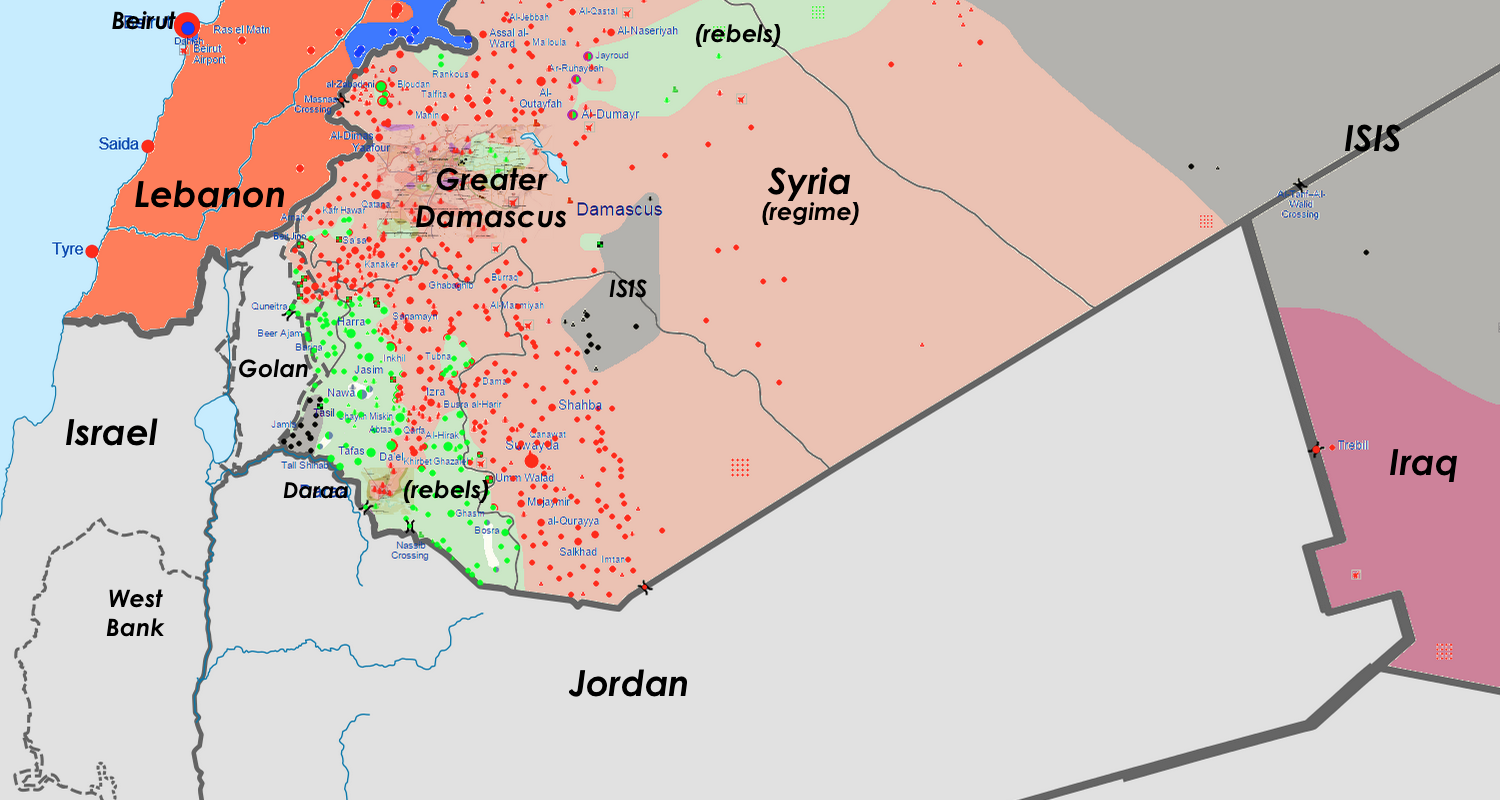Hurriyet Daily News: “Turkish army reluctant over government will to intervene in Syria”.
An alternative version of that headline might be: Caretaker Turkish government without parliamentary mandate tries to start a doubly illegal war in Syria. Military politely declines request.

Click to enlarge: Detailed conflict map of Northern Syria, June 29, 2015, including Kobani. (Adapted by Arsenal For Democracy from Wikimedia)
Maybe back off on this, AKP. It’s not like you were rushing to invade Syria when you had a parliamentary majority at any point during the last four years of war. Now you don’t even really control the government because it’s an interregnum during coalition talks and you’re suddenly picking a fight with the military to dare them to defy you — as they probably should in this case. Why would you do that? Probably, in case fresh elections are called, so you can re-engage the ranks of anti-militarist voters who appreciate the AKP’s efforts to curb military meddling in Turkey’s politics and defiance of civilian authority.
Here’s the military’s rationale, per Hurriyet Daily News:
Chief of General Staff Gen. Necdet Özel has delayed the government directive with justifications of international law and politics and the uncertainty of reactions from the Bashar al-Assad regime in Syria, as well as from its supporters Russia and Iran, together with the United States.
[…]
The military does not want to get into a major military action on the directives of the Justice and Development Party (AK Parti) government which lost its parliamentary majority in the June 7 elections. The coalition talks to form a new government with either the Republican Peoples’ Party (CHP) or the Nationalist Movement Party (MHP) will start next week and if a new government is formed in weeks’ time, the directive which might lead to a war could be obsolete. It is a fact that if the CHP becomes a coalition partner, which is more likely, that Turkey’s policy on Syria and ISIL could change.
There is also the factor of a reshuffle among military ranks. The office of Özel ends in August and civilian sources speculate that he is playing with time in order not to become the general that takes Turkey into war at a critical time.
Generally fairly solid reasoning, I would say.
The elected civilian leadership should be paramount to the military leadership in virtually all circumstances, but this is an exceptional situation: after elections and before the formation of a new government. Launching a non-defensive war of choice is probably not within the current government’s authority. Therefore the military is probably making a reasonable point in stalling here.
Plus, the conditions in northern Syria since at least April primarily have tipped in favor (at least temporarily) toward the anti-government rebel forces most closely aligned with Turkey, with the exception of Syrian Kurdish fighters who are doing their own thing and not really causing a true emergency for Turkey either (despite the Turkish president’s fearmongering). So there’s no apparent, genuine urgency now, relative to any other moment in the past six months.
Turkey’s military is right to urge patience and a new government before making any huge decisions like invading a neighbor engulfed in civil war.








